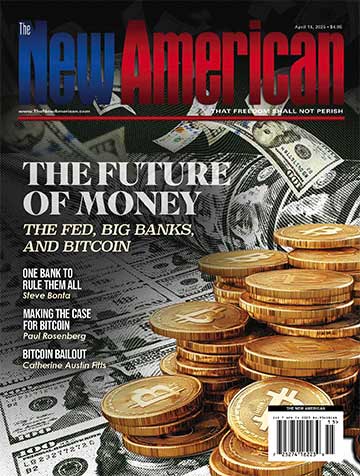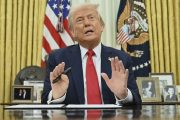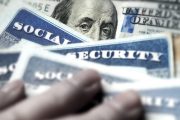
Countersnipers from the Beaver County Emergency Services shared photos of would-be assassin Thomas Matthew Crooks 33 minutes before he fired at former President Donald Trump at 6:11 p.m. on July 13 at Trump’s campaign rally in Butler, Pennsylvania.
The countersnipers also exchanged messages about Crooks, texts released by GOP Iowa Senator Chuck Grassley show.
First released to The New York Times, the text messages and photos don’t explain why or how Crooks made it to the roof of the AGR International building from which he shot Trump, murdered firefighter Corey Comperatore, and wounded two others.
Crooks and Bicycle Spotted
An officer whose shift was ending spotted Crooks and texted his comrades at 4:26 p.m.
“Someone followed our lead and snuck in and parked by our cars just so you know,” the officer wrote.
“I’m just letting you know because you see me go out with my rifle and put it in my car,” the messages continue. “So he knows you guys are up there he’s sitting to the direct right on a picnic table about 50 yards from the exit.”
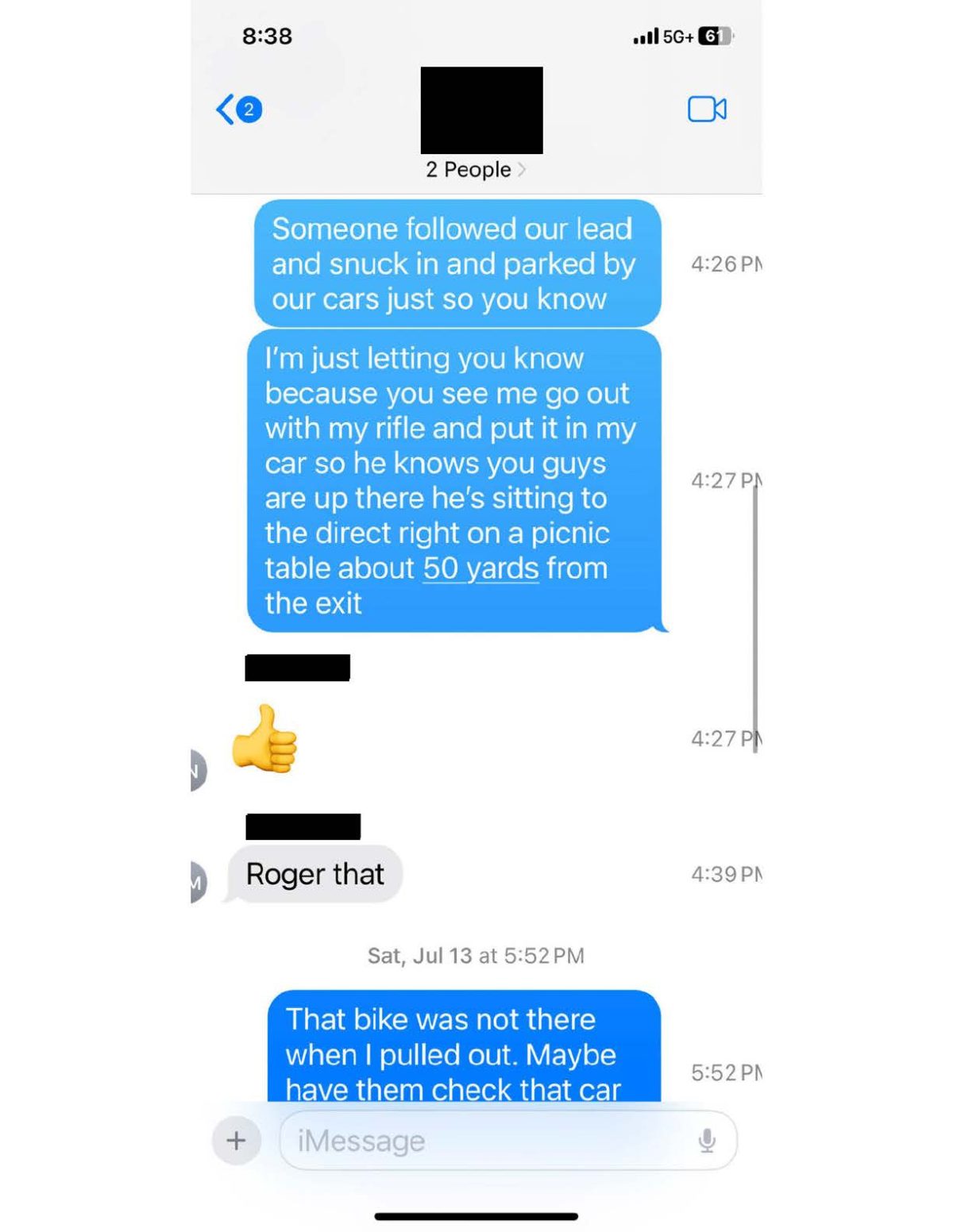
The officers shared photos of Crooks and his bike at 5:38 p.m. with messages that noted Crooks had a rangefinder.
“Kid learning [sic] around building we are in,” the messages reported. “[The] AGR [building] I believe it is. I did see him with a range finder looking towards stage. FYI. If you wanna notify SS snipers to look out. I lost sight of him. Also a bike with backpack sitting next to it in rear of building that was not seen earlier.”
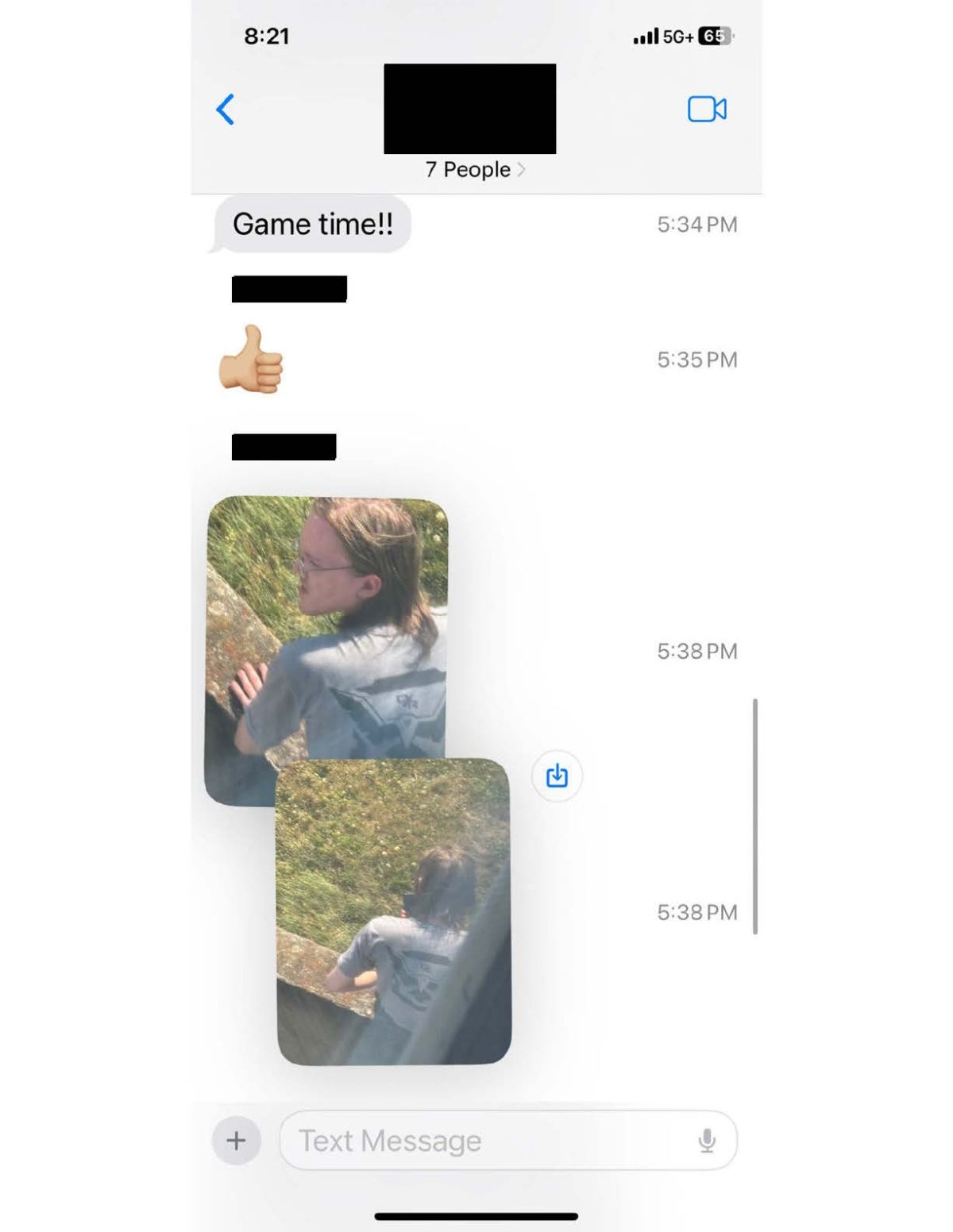
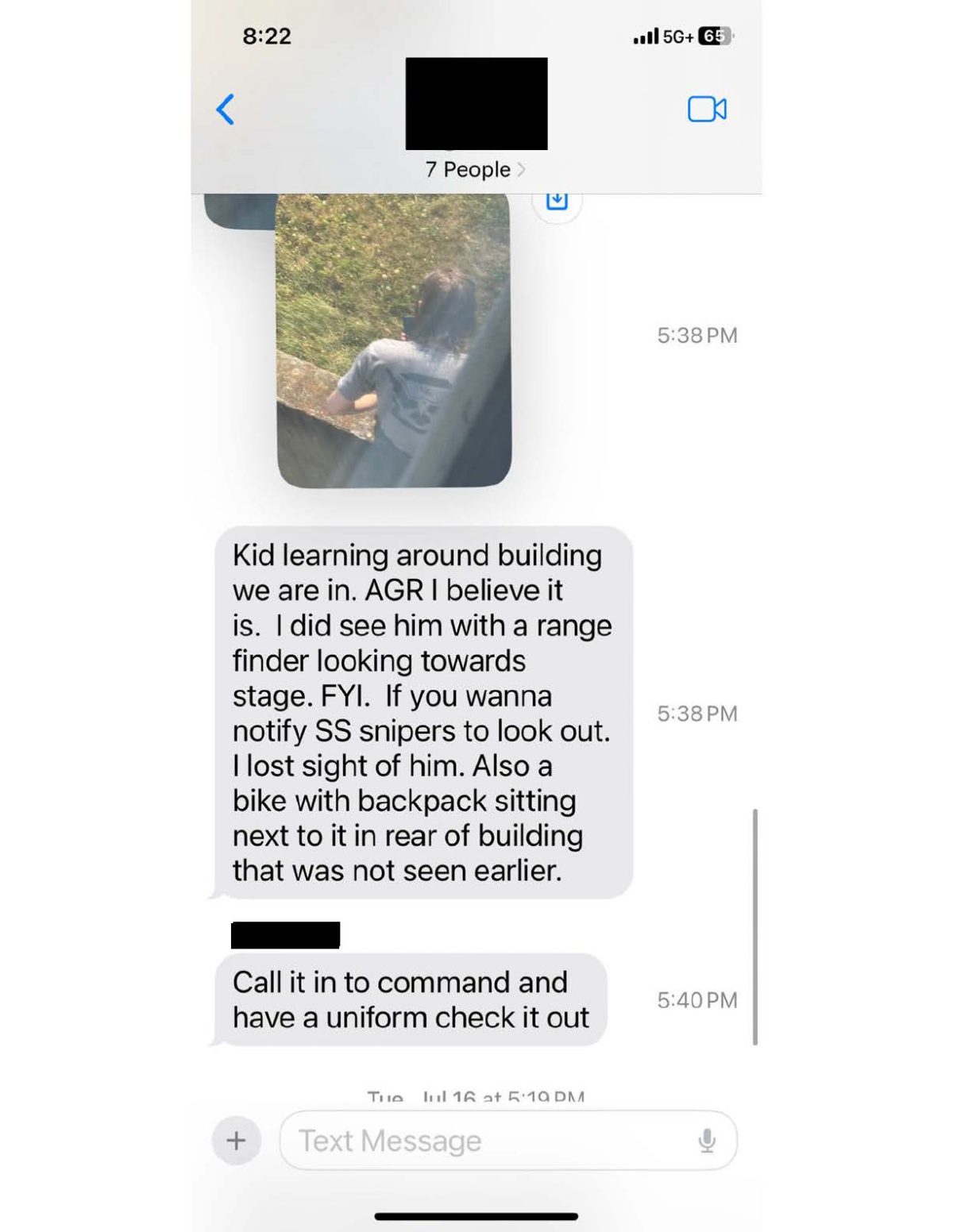
“Call it in to command and have a uniform check it out,” a message at 5:40 said.
And 12 minutes before Crooks fired, an officer said “they’re asking for a direction of travel.”
“Not sure,” came the reply at 6 p.m. “He was up against the building. If I had to guess towards the back. Away from the event.”
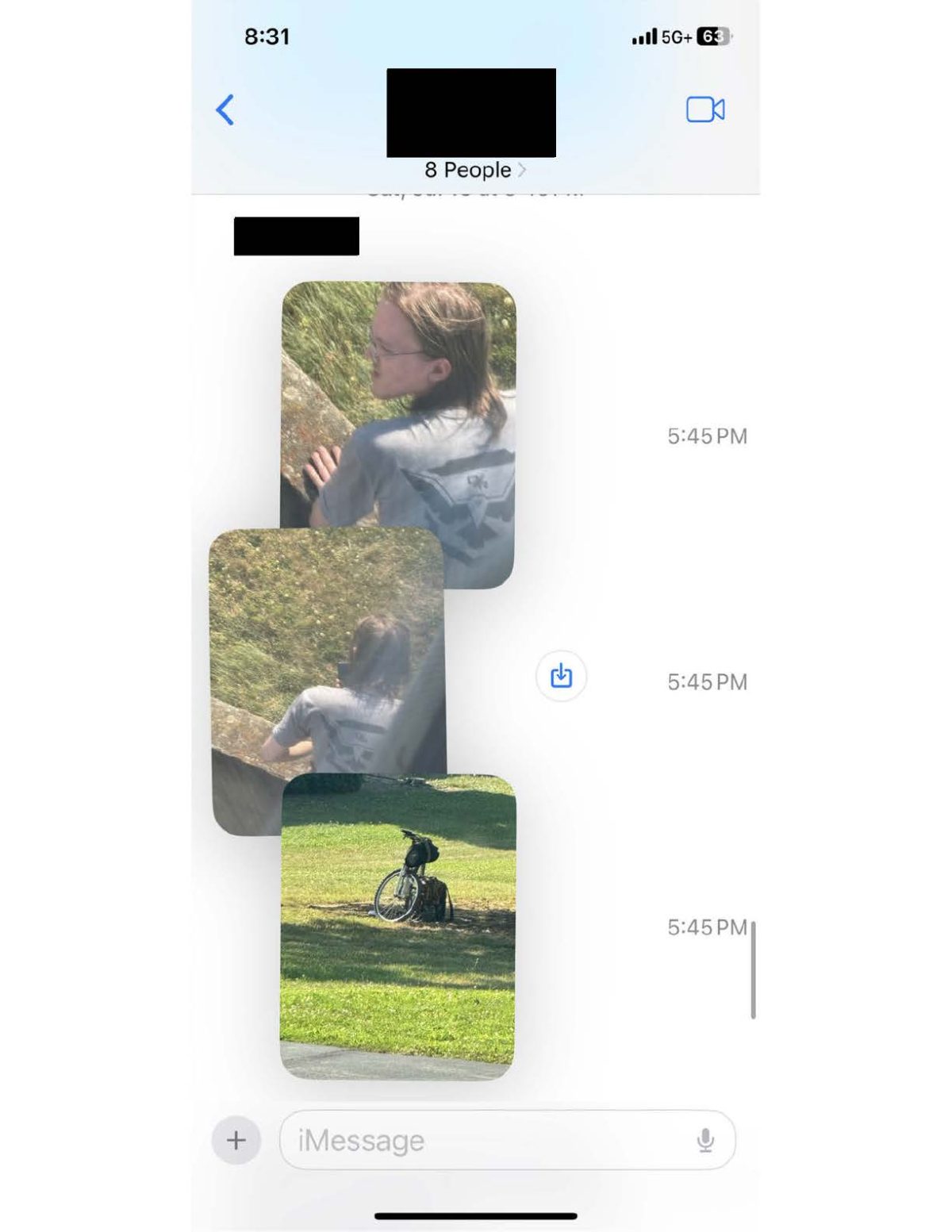
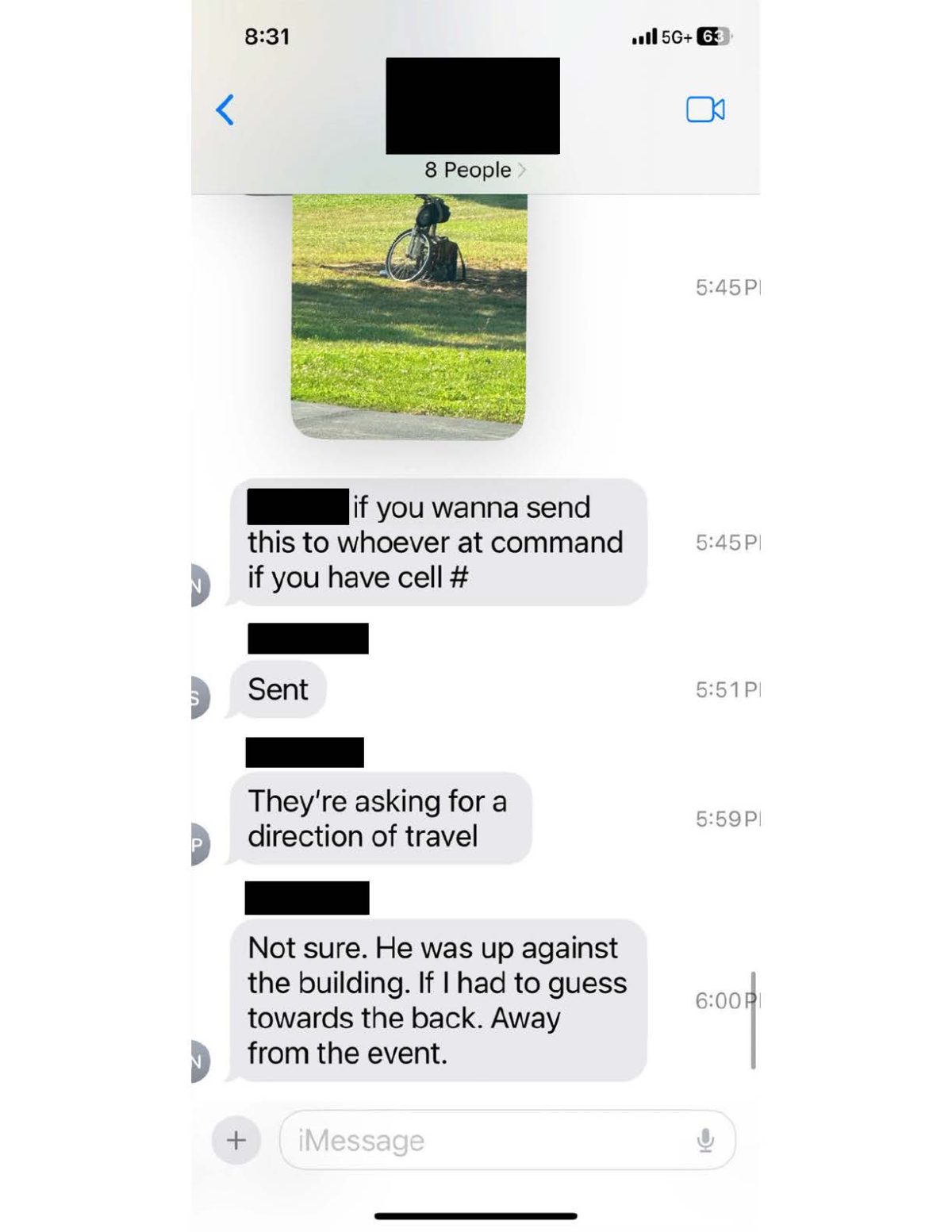
The timeline of Crooks’s movements in the Beaver County team’s after-action report shows that officers spotted him 5:10 p.m, photographed him at 5:14 p.m., photographed his bike at 5:28 p.m., and saw him “looking at phone, news feeds, and range finder confirmed through monoculars” at 5:32 p.m. From 5:34 p.m. on, the report shows, officers traded messages about Crooks’s location.
As the Times reported, the text exchanges “add to the evidence that the would-be assassin was often one step ahead of security forces, and in particular the Secret Service.”
Mr. Crooks scoped out the rally site a day before the Secret Service did. He used a drone to survey the site while the Secret Service did not seek permission to use one for the rally. He researched how far Lee Harvey Oswald was from John F. Kennedy when he fatally shot the president in 1963 — the answer is about 265 feet — and managed to climb onto a roof that was about 400 feet from Mr. Trump at its closest point. The Secret Service left that roof unmanned.
And while countersnipers were assigned to surveil the rally, Mr. Crooks was also in a position to watch them.…
As the officers in the video walk toward the warehouse on which Mr. Crooks’s lifeless body lay, one can be heard saying, “I’m trying to figure out how this guy got here.”
Crooks reached the building because the Secret Service excluded it from its perimeter security. In testimony before the U.S. House Oversight Committee, then Secret Service Director Kimberly Cheatle said she didn’t know which agency was supposed to guard the AGR roof. She resigned the day after her disastrous testimony.
Crooks’s Movements
The Times also reported that local officers were briefed about the day’s event at 9:00 a.m. while Crooks was at the Home Depot purchasing a ladder to climb atop the AGR building:
Then Mr. Crooks drove to the rally site, reaching the show grounds by around 10 a.m. and staying about 70 minutes — even as the local countersnipers were arriving.
When Mr. Crooks left, he drove back to his hometown and bought 50 rounds of ammunition at Allegheny Arms & Gun Works. Then he returned to Butler, arriving at the farm show grounds in his Hyundai Sonata at about 3:35 p.m., according to geolocation information from one of his cellphones. About 15 minutes later, he flew his drone over the site for 11 minutes, including in a path about 200 yards from Mr. Trump’s podium.
He finished using his drone and sat at the picnic table, where the countersniper spotted him.
Mr. Crooks walked to his car, left the drone inside and was soon hanging around the warehouse complex.
Crooks didn’t use the ladder, and when a text message between the officers said “he was up against the building” at 6:00 p.m., he was about to climb to the roof.
“Mr. Trump took the podium at 6:03 p.m., to a roaring crowd,” the Times reported:
Six minutes later, rally attendees began pointing to someone on the roof of the warehouse. Either through luck or preparation, Mr. Crooks had found a place on the roof that let him see Mr. Trump clearly, but also seemed to keep him somewhat hidden from the Secret Service countersnipers.…
The Butler Township officers had no ladder themselves, so one officer boosted up another, who grabbed the roof and pulled himself up — to find Mr. Crooks pointing a gun at him. With no hands left to pull his own gun, the officer dropped.
Bodycam Footage
The photos and texts are the second major release from Grassley. Last week, he released police body camera footage that confirmed that local cops photographed Crooks.
The footage shows local police and a Secret Service agent in a conversation about who saw Crooks before he tried to assassinate Trump.
Today is the deadline for Homeland Security Secretary and interim Secret Service Director Ron Rowe to answer the following question from Grassley:
• Did the Secret Service deploy drones, and if not why?
• Did local or state cops ask for drone coverage? If so, did the Secret Service deploy them? If not, why?
• Did an unauthorized drone fly over the rally’s restricted airspace?
• If so, was the Secret Service drone operator aware of it, and did the operator deploy countermeasures? If not, why?
• Who at the Secret Service decided whether or not to deploy a drone?
The latest from Grassley followed a report in The Washington Post that the Secret Service repeatedly denied requests from Trump’s campaign to fortify his protective detail.

